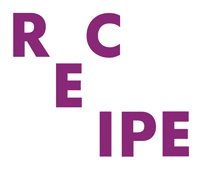When we introduce the concept of Marketing Automation to a business, it's met with excitement, a few nerves, and lots of questions. Questions like;
- "how do we make sure our customers don't unsubscribe?"
- "how do we make sure our customers don't think we're spamming them?"
- "what's the difference between marketing automation and AI?"
- "why do the emails in a workflow have to come from me personally?"
- "but why are you talking about the website? I thought we were talking about Marketing Automation?"
Q. "When should I start using Marketing Automation?"
The short answer is, now.
Marketers need to start thinking about marketing automation in the context of customer service (at the very least) because consumers are not getting any more patient. These key insights from Auckland GROW 2018 show that 90% of customers expect an immediate response from customer service teams, and that 35-50% of deals go to the vendor who responds first. New stats released say up to 50% of marketers are using marketing automation for their business: if you’re not doing it, the marketer next to you is. It used to be a case of ‘the best product wins’. Now, a business’ ability to deliver on a ‘self-service’ experience will drive decision-making with consumers choosing the best customer experience. There are two approaches to embedding Marketing Automation into a business. Both are great, and both reflect the kind of marketer you are.
1. Are you highly strategic, and want to develop an over-arching plan that’ll address the big knotty problems the leadership team struggle with?
Fantastic. Here’s 5-simple steps to begin the development of your marketing automation strategy.
2. Are you an agile do-er, and what to get some quick wins that’ll prove the value of marketing automation to your team?
Get automating in 10-simple steps
Whether you prefer a planned approach or a ‘let’s get some quick wins’ approach, start working toward outcomes now.
Q. "how do we make sure our customers don't unsubscribe?"
The two main reasons prospects unsubscribe from lists is because they didn't subscribe to them in the first place or don't find the content valuable.
Marketing Automation starts a business and a prospect off on the right foot because it's permissive. Instead of the old-school approach of 'pay and spray' which sees one mass newsletter going out to a database, the customer triggers the communication. By this very virtue, a relationship of trust is fostered between the prospect and the business.
To limit unsubscribes, automations should be guided by the customer's needs (not a hard-sell). Communications assist, educate, inspire and nurture. They pre-empt questions before the prospect asks. This will serve to not only reduce unsubscribes, but also to move customers closer to purchase.
Q. "what's the difference between marketing automation and AI?"
Automation leverages software that follows pre-programmed rules and pathways designed by you, the marketer. It effectively sets in motion a logic tree, for example, 'if x, then do y'.
Artificial intelligence is designed to simulate human thinking. AI does not follow a logic tree. That’s not what it’s designed to do; it’s designed to constantly seek patterns (like humans), learn from experience (like humans) and self-select the appropriate responses in situations based on that (like humans).
Automations only function to collate data for the marketers review; AI systems ‘understand’ it.
Q. "why do the emails in a marketing automation workflow have to come from me personally?"
Because we want to get personal. Marketing automation enables the right people on the team to start building personal relationships with prospects from the get-go, and at scale. Any responses are already set up to go to the right person on the team, so they're more likely to get the best answer to meet their needs. Personalisation increases open rates, click-through rates, and transaction rates.
Q. "but why are you talking about the website? I thought we were talking about Marketing Automation?"
Marketing automation starts with that all-important trigger: that's what makes it permissive. There has to be an action the prospect takes that triggers the automation. When you're starting to use marketing automation, the simplest opt-ins to an automation can be created using the lead capture mechanisms on your website. The most basic kind of marketing automation, is an FAQ section, just like this. The prospect clicks on the question they have, and the website takes them to the content that's relevant to them so they can self-serve.
